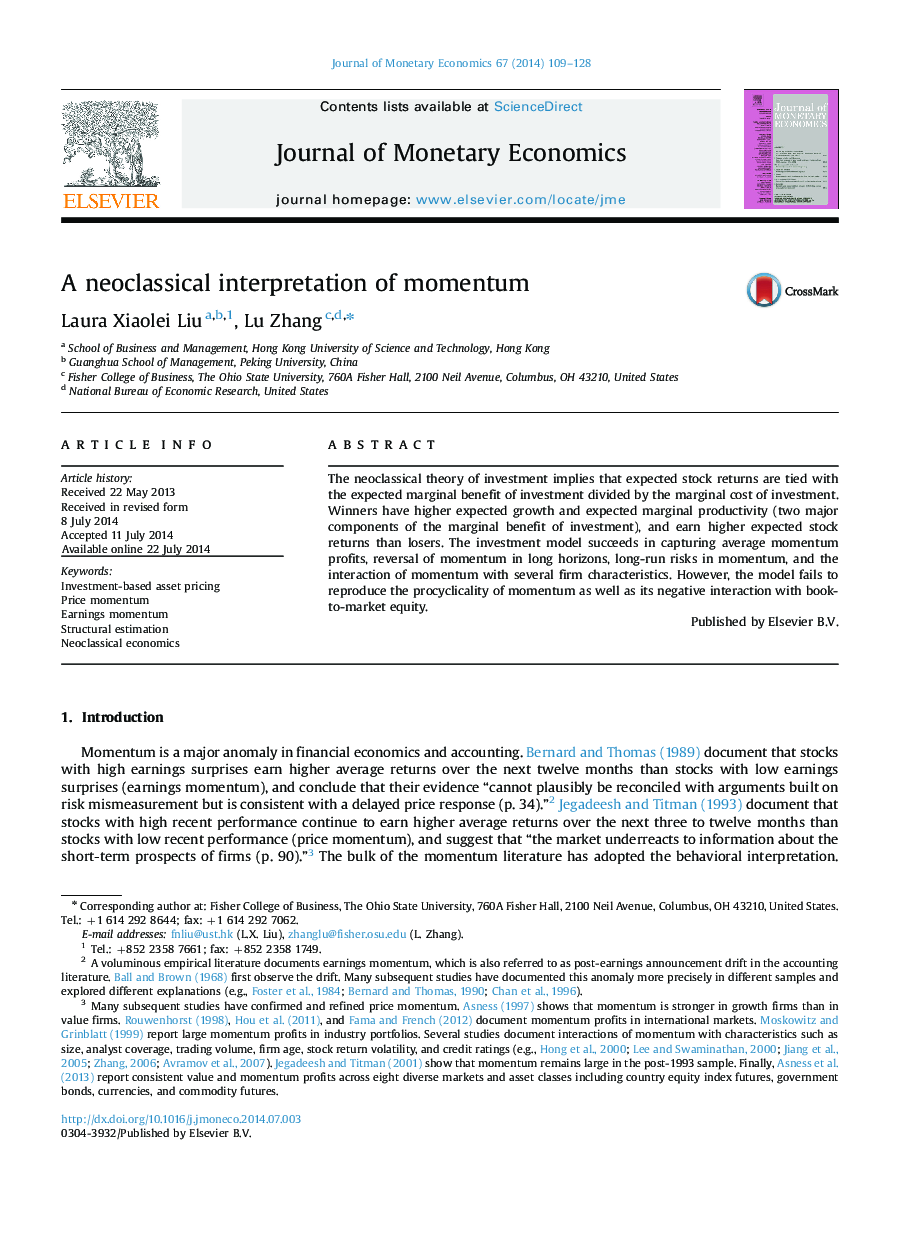| Article ID | Journal | Published Year | Pages | File Type |
|---|---|---|---|---|
| 967432 | Journal of Monetary Economics | 2014 | 20 Pages |
Abstract
The neoclassical theory of investment implies that expected stock returns are tied with the expected marginal benefit of investment divided by the marginal cost of investment. Winners have higher expected growth and expected marginal productivity (two major components of the marginal benefit of investment), and earn higher expected stock returns than losers. The investment model succeeds in capturing average momentum profits, reversal of momentum in long horizons, long-run risks in momentum, and the interaction of momentum with several firm characteristics. However, the model fails to reproduce the procyclicality of momentum as well as its negative interaction with book-to-market equity.
Related Topics
Social Sciences and Humanities
Economics, Econometrics and Finance
Economics and Econometrics
Authors
Laura Xiaolei Liu, Lu Zhang,
